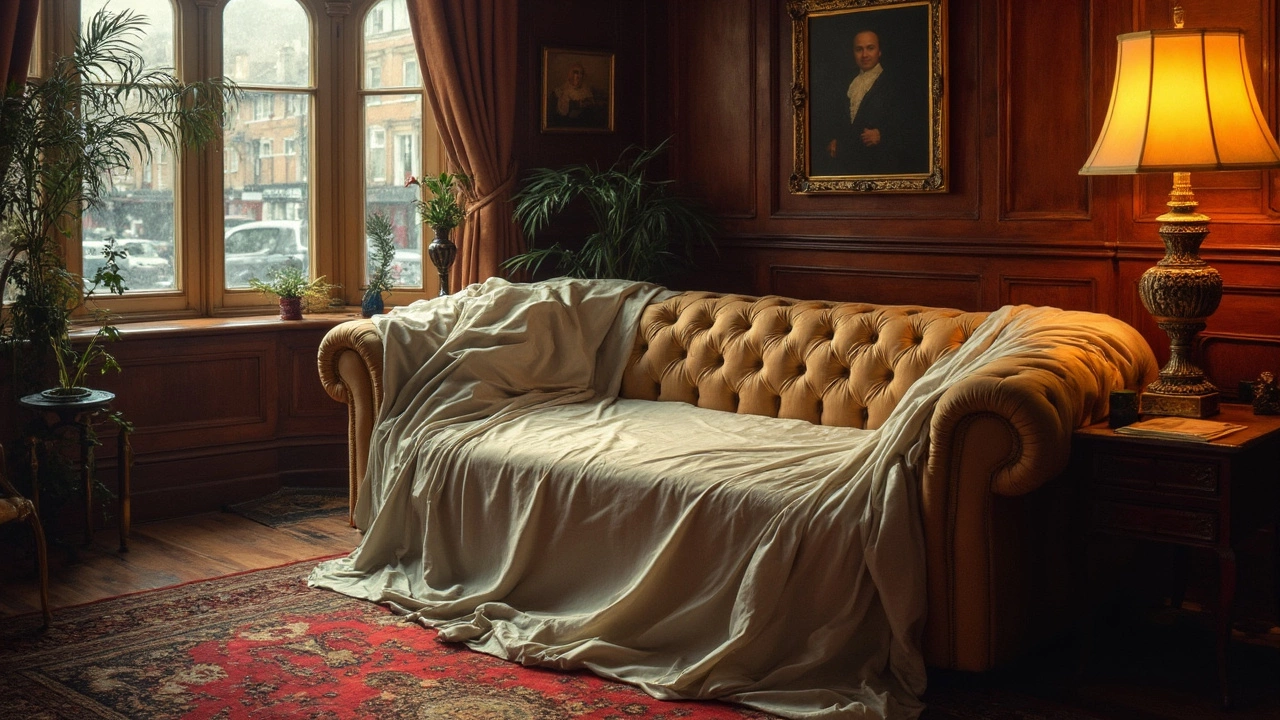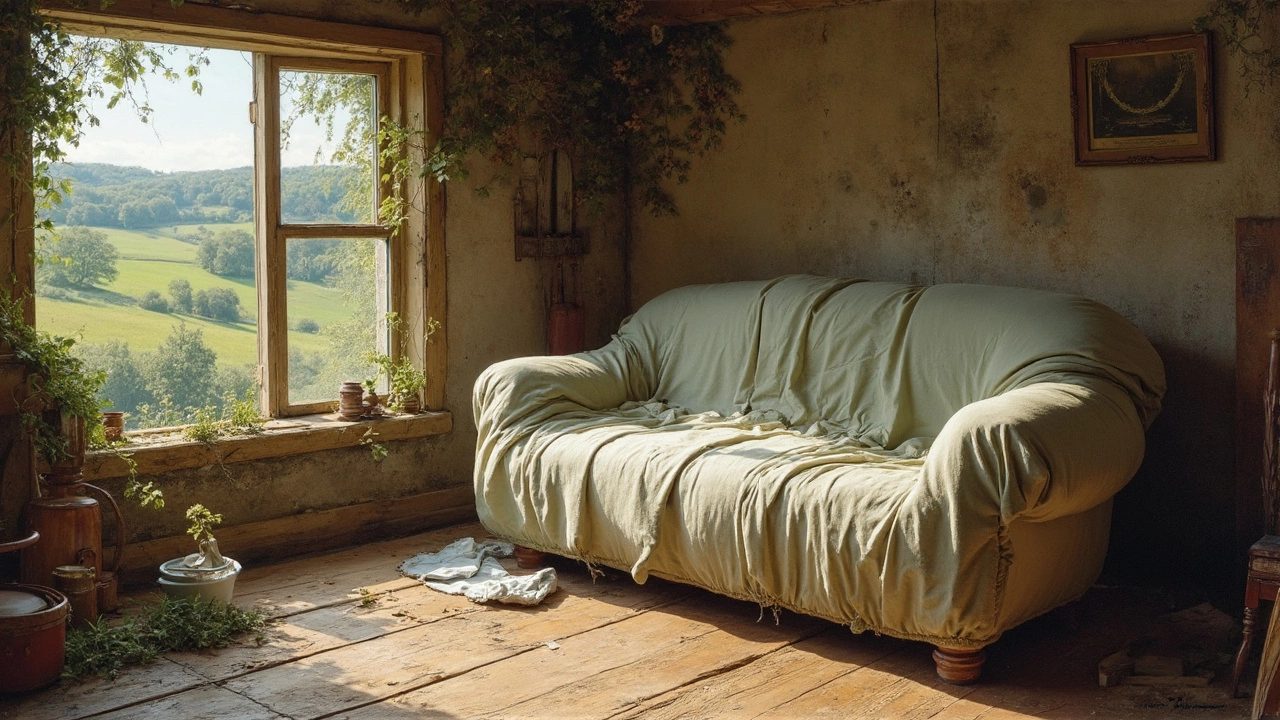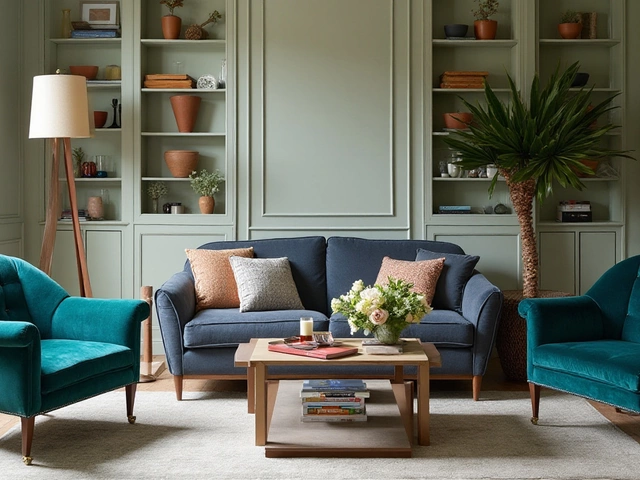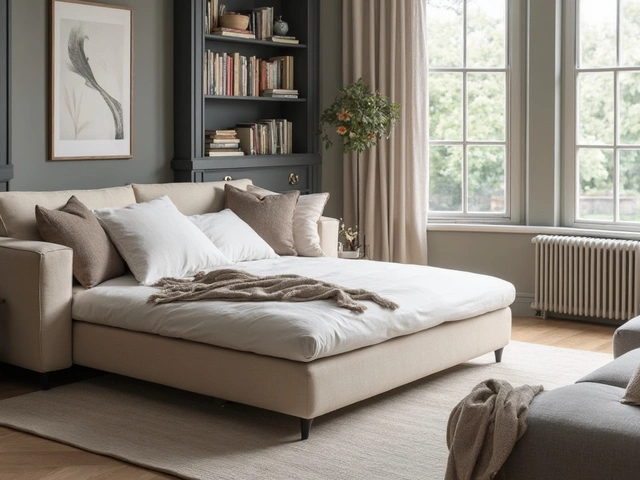 25
Mar,2025
25
Mar,2025
Ever thought about the agony of finding your cherished sofa covered in dust or mold after a few months in storage? Yikes, right? Covering your sofa correctly before putting it away can save you from such heartbreak. Let’s get straight into it. First things first, dive into choosing the right cover. Fabric ones are breathable, while plastic covers are waterproof. Which one suits your fate – do you need to breathe or stay dry?
Once you've figured that out, it’s prep time! Clean your sofa thoroughly before storage – you don’t want to seal in any dirt or stains. Vacuum those nooks and crannies, and maybe use a fabric cleaner for a fresh start. Ever heard of wrapping critical areas with padding or old sheets before covering? Not a bad idea to give some extra cushion and protection!
Selecting the Right Cover
Alright, so you've got to cover that beloved sofa, but what exactly should you use? Picking the right cover is crucial to keep your sofa in prime condition while it takes a little snooze in storage. Let’s look at some options that’ll do the trick.
Fabric Covers: Breathability is Key
Fabric covers are great for sofa storage because they’re breathable. This trait is essential to prevent moisture build-up, which can lead to mold. It also makes fabric covers perfect for indoor storage units. Look for heavy-duty cotton or canvas, as they are both durable and allow air circulation.
Plastic Covers: All About Waterproofing
If moisture is your main enemy or you're storing in a location where water damage could be a risk, plastic covers could be your go-to. They’re fantastic for keeping your furniture dry. But, there's a catch – use them in dry environments only. Otherwise, you risk sealing moisture inside, creating a greenhouse effect for mold.
Custom or Store-Bought? Weighing the Options
If you want a snug fit, think of furniture covering options that are custom-made. They fit perfectly and don’t shift around much, offering consistent protection. Alternatively, ready-made covers are more budget-friendly and can be found in various sizes. Measure your sofa correctly to get the best fit.
Consider Layering for Extra Protection
For that extra insurance, you can try layering. Place an old sheet or a thin blanket under the primary cover for adding another barrier against dust and minor bumps. It’s like giving your sofa an extra hug while it waits to be back in action.
No matter what you choose, the proper cover is essential to protecting your sofa while in undisputed furniture storage. Double-check if the cover has any tears or holes, because that would pretty much defeat the purpose, wouldn’t it?
Preparing Your Sofa
So, how do you get your sofa ready for hibernation? It's more than just throwing a cover on! Proper prep ensures your sofa stays fresh and damage-free in storage.
1. Clean Thoroughly
It might feel like common sense, but cleaning is crucial. Begin with vacuuming every surface and crevice—dust loves the forgotten corners. A damp cloth can take care of most surface dirt. Consider using a fabric cleaner if you've got some stubborn stains.
"Cleaning your furniture before storing it is like brushing your teeth before bed—essential for long-term health," says interior expert Sarah Lynch.
2. Disassemble if Possible
Got removable legs or cushions? Take them off! Disassembly helps with minimizing space and prevents awkward bends or breaks.
3. Protect the Delicates
Before kitting your sofa out with that sofa storage cover, wrap the delicate parts in old sheets or blankets. This adds an extra layer of protection against scratches or dings.
For cushions, a breathable pillowcase or cotton cover will do just fine. This allows air circulation while ensuring they don’t lose shape.
Additional Stats
Here’s something fascinating—did you know that 70% of fabric sofas show wear and tear from improper storage?
Remember, proper prepping is your ticket to avoiding disappointment upon retrieval. Take your time, do it right, and your sofa will thank you later!

Positioning and Placement
Now that you've prepped your sofa for its temporary nap, it’s time to think about where and how to place it. Rule number one: keep it off the ground. Elevating your sofa storage with pallets or blocks keeps it dry and safe from unexpected floods or creepy crawlies. No one likes surprises, especially damp ones!
Best Spots in Storage
While it may sound trivial, the corner of your storage space can be your sofa’s best friend. It offers stability, reducing the risk of being accidentally bumped or bruised. If possible, place it away from windows to avoid direct sunlight, which can fade colors and weaken fabrics over time.
Got more than one piece of furniture? Think of creating a stable Jenga stack by placing lighter items on top. But be sure the stack is balanced, or else your furniture covering efforts might turn into a game of dominoes!
Keep It Breathable
It’s a good idea to leave a little breathing room around your sofa. Crowding it with other items might trap humidity, encouraging mold to show up uninvited. Empty out an area around it, giving some room for air to flow, reducing moisture and keeping the air fresh.
Check Regularly
A quick check every few months can save you from future heartaches. Pop in to see if your sofa has moved or if the cover needs any adjusting. The peace of mind is worth the few minutes spent today.
- Tip: Protect your sofas from pests by sprinkling some silica gel packs within the storage area.
- Insider Idea: Attach 'Do Not Stack' signs on specific pieces to prevent heavier items from resting on your delicate furniture!
Additional Protection Tips
Trying to keep your beloved sofa in tip-top shape while it's in storage requires a bit of extra attention. Let’s talk about the often-overlooked details that can make a big difference.
Keep it Elevated
Ideally, you don’t want your sofa sitting directly on the floor. Especially in areas prone to dampness, it's smart to use pallets or wooden blocks to keep your furniture off the ground. This prevents moisture damage, which can be a silent destroyer.
Climate Control
If you've got the option, storing your furniture in a climate-controlled unit is a game changer. It helps to maintain a steady temperature and humidity level, avoiding unwanted surprises like mildew or warping in wooden frames.
Pest Prevention
Nobody wants their sofa to become a cozy hotel for critters. Use mothballs or cedar chips around the storage area as a natural deterrent. Sealing all entry points or even draping the area with additional covers can keep those unwanted guests at bay.
Airing it Out
Even in storage, your sofa shouldn’t be left unattended for ages. Every few months, pop in to remove the cover and let it breathe. This can help prevent those musty odors from settling in.
Table: Common Storage Mistakes
| Mistake | Consequence |
|---|---|
| No Elevation | Moisture Damage |
| No Pest Control | Infestations |
| Lack of Climate Control | Mildew Growth |
These are simple steps, but they can significantly extend the lifespan of your sofa, keeping it looking fresh and well-kept for years. Worth the effort, right?




